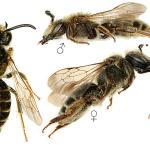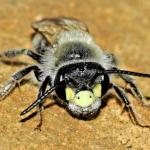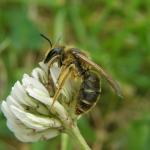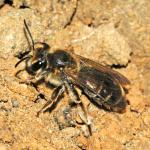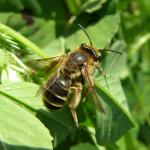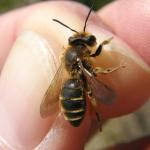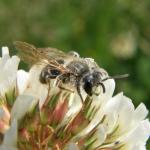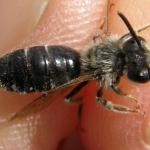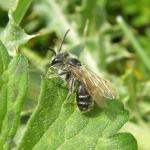Andrena separata Smith, 1847.
A. labialis is among the largest of our Andrena species and the male is very distinctive, having a large yellow area on the face between the mandibles. Males patrol along hedge-lines and over tall vegetation which contains early-flowering legumes (Fabaceae), such as yellow vetchling (Lathyrus sp.).
This species is locally common in the midlands and southern Britain. It is widespread in northern and central Europe.
This bee is not regarded as being scarce or threatened. It is possible that the status of this bee requires revision.
May be found in open, grassland habitats where there is a good representation of leguminous flowers.
Univoltine: May to July.
Nests singly in the ground, but it may have strong aggregations where conditions are particularly favourable.
A variety of early-flowering legumes, the males will also visit hawthorn (Crataegus monogyna) flowers.
The cuckoo-bee Sphecodes rubicundus von Hagens is a parasite of this species. An unidentified Stylops (Strepsiptera) has also been known to attack this species (R.C.L. Perkins 1919). Larvae and puparia of the bee-fly Bombylius major Linnaeus have also been found in the cells of Andrena labialis (Chapman, 1878).
2006


